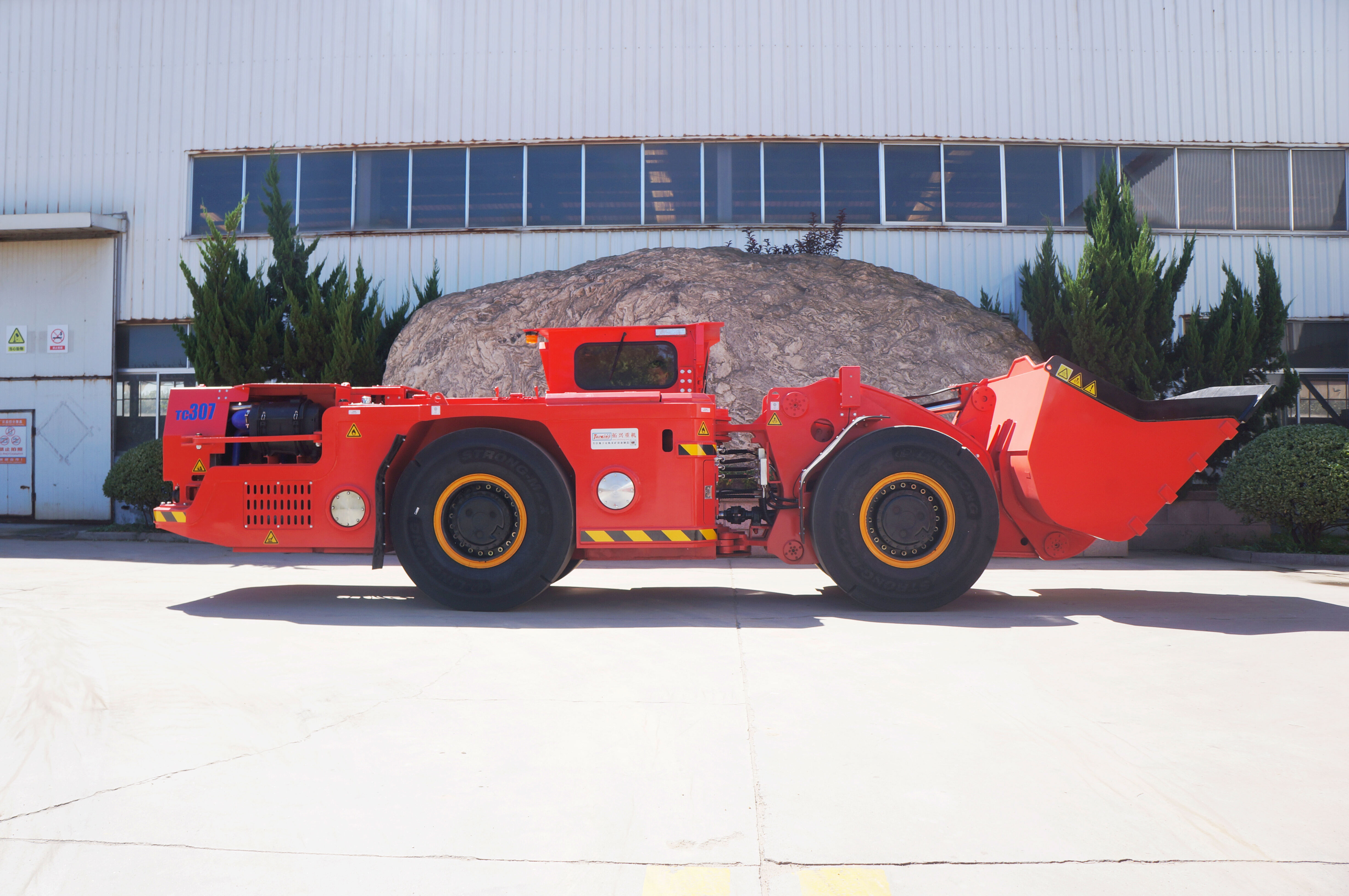Enhancing Mine Operations: The Dual Impact of Underground Mining Scooptrams
Modern mining operations rely heavily on underground mining scooptrams to achieve both safety objectives and production targets in challenging subsurface environments. These versatile load-haul-dump (LHD) vehicles have evolved into sophisticated equipment that combines robust engineering with intelligent features to address the unique demands of underground extraction. Unlike conventional loading equipment, underground mining scooptrams are specifically designed to operate in confined spaces while handling heavy payloads of ore and waste rock. Their compact yet powerful design allows for efficient material movement through narrow drifts and stopes, directly contributing to operational productivity. Simultaneously, advanced safety systems integrated into modern underground mining scooptrams protect operators and other mine personnel in hazardous underground conditions. The marriage of these capabilities makes them indispensable assets in contemporary mining operations where efficiency and worker protection are equally prioritized.
Safety Innovations in Modern Scooptrams
Enhanced Operator Protection Systems
Underground mining scooptrams incorporate multiple layers of safety features to shield operators from workplace hazards. Reinforced ROPS/FOPS (Roll-Over Protective Structure/Falling Object Protective Structure) cabins withstand impacts from falling rocks or vehicle rollovers, common risks in underground environments. Pressurized cabins with advanced filtration systems prevent inhalation of harmful dust particles and diesel particulates, maintaining air quality for operators during extended shifts. Proximity detection technology alerts scooptram operators to nearby personnel or obstacles through visual and auditory warnings, reducing collision risks in low-visibility areas. Some newer underground mining scooptram models feature automatic braking systems that engage when detecting potential impacts, providing an additional layer of accident prevention. These comprehensive protection measures have significantly reduced injury rates in underground operations where confined spaces and limited visibility traditionally increased accident potential.
Hazard Mitigation Through Design
The very architecture of underground mining scooptrams addresses inherent risks of underground material handling. Low-profile designs minimize the risk of striking overhead installations while operating in drifts with limited vertical clearance. Articulated steering mechanisms provide exceptional maneuverability in tight spaces where traditional equipment would struggle to operate safely. Fire suppression systems installed in engine compartments quickly contain potential fuel or electrical fires before they endanger operators or mine infrastructure. Underground mining scooptrams designed for explosive atmospheres feature intrinsically safe electrical systems that prevent sparking in gas-prone environments. The strategic placement of emergency stop controls and fire extinguishers ensures rapid response capability during critical situations. These design elements collectively transform underground mining scooptrams from simple loading machines into comprehensive safety solutions that actively reduce risk factors in underground mining operations.

Productivity Advancements
Efficient Material Handling Capabilities
Underground mining scooptrams dramatically improve production rates through optimized loading and hauling cycles. Powerful hydraulic systems enable rapid bucket filling even with dense ores or large fragmented rock, reducing loading phase duration. High-torque electric or diesel engines provide the necessary power to transport full buckets through steep underground ramps without performance loss. Many modern underground mining scooptrams feature automatic bucket positioning systems that optimize loading angles for different material types, minimizing spillage during transport. The ability to both load and haul materials eliminates the need for separate loading and transport equipment in many mining configurations, streamlining the production process. These efficiency gains allow mines to move more material per shift with fewer machines, directly impacting the bottom line while reducing energy consumption per ton of ore handled.
Advanced Control Systems
Technological integration has elevated underground mining scooptrams beyond simple mechanical tools into intelligent production assets. Many models now feature payload monitoring systems that provide real-time weight measurements, preventing underloading or dangerous overload situations. Automated bucket control algorithms remember optimal loading parameters for different faces, improving consistency across operator shifts. Some underground mining scooptrams incorporate telematics systems that track location, production metrics, and machine health indicators, feeding data to centralized mine management platforms. These control advancements reduce operator fatigue while increasing precision in material handling tasks. The resulting consistency in loading and hauling operations leads to predictable production outputs that facilitate better mine planning and resource allocation. As mines pursue leaner operations, these smart features make underground mining scooptrams invaluable for maintaining high productivity standards.
Operational Flexibility
Adaptability to Various Mining Methods
Underground mining scooptrams demonstrate remarkable versatility across different extraction techniques. In room-and-pillar operations, they efficiently gather fragmented ore while navigating the irregular layouts characteristic of this method. For sublevel stoping configurations, scooptrams access production drifts to clean blasted ore from draw points. Their compact dimensions allow operation in narrow vein mines where other equipment cannot maneuver. Some underground mining scooptram models feature adjustable widths to accommodate varying drift dimensions within the same mine. This adaptability proves particularly valuable for mining companies operating multiple deposits with different geometries or those transitioning between mining methods as operations progress deeper into ore bodies. The ability to repurpose underground mining scooptrams across different phases of mine development reduces capital expenditure on specialized equipment for each specific task.
Integration with Automated Systems
Leading-edge underground mining scooptrams now offer various levels of automation to suit different operational needs. Semi-autonomous models can perform repetitive haulage cycles under remote supervision, allowing operators to manage multiple units from a control station. Fully autonomous underground mining scooptrams operate in predefined patterns for mucking and hauling in hazardous areas where human presence should be minimized. These automated systems incorporate LiDAR, radar, and camera arrays for obstacle detection and navigation without GPS availability underground. The transition toward automation helps address labor shortages in remote mining locations while improving consistency in material handling operations. Mines implementing these technologies report productivity increases of 20-30% from reduced shift change downtime and optimized cycle times. As automation technology matures, underground mining scooptrams are poised to become central components of the increasingly digital mine environment.
Maintenance and Reliability
Durable Construction for Harsh Environments
Underground mining scooptrams are engineered to withstand the punishing conditions of daily operation in mines. Reinforced chassis designs absorb impacts from rough underground roadways without compromising structural integrity. Component layouts prioritize accessibility for maintenance while protecting sensitive systems from rock damage and dust infiltration. Critical hydraulic lines route through protected channels with abrasion-resistant coatings to prevent leaks in dirty environments. Heavy-duty cooling systems maintain optimal operating temperatures even when working in deep, hot mine areas. These durability features extend service intervals and reduce unplanned downtime, ensuring underground mining scooptrams remain available when production demands peak. The robust construction also contributes to longer asset lifecycles, with well-maintained units often exceeding a decade of productive service in demanding mining conditions.
Predictive Maintenance Capabilities
Modern underground mining scooptrams incorporate sophisticated monitoring systems that anticipate maintenance needs before failures occur. Sensors track vibration patterns in driveline components to detect abnormal wear in bearings or gears. Oil analysis systems monitor lubricant condition in real-time, signaling when contamination or breakdown necessitates changes. Thermal imaging capabilities identify overheating components that may require service before catastrophic failure. These predictive systems feed data to mine maintenance teams, allowing them to schedule repairs during planned downtime rather than interrupting production. Some advanced underground mining scooptrams even recommend specific maintenance actions based on diagnostic data, reducing reliance on technician experience for troubleshooting. This proactive approach to equipment care maximizes availability while minimizing repair costs over the scooptram's operational lifespan.
FAQ
What's the typical lifespan of an underground mining scooptram?
With proper maintenance, quality underground mining scooptrams deliver 8-12 years of productive service, with some units lasting longer through component rebuilds.
How do electric scooptrams compare to diesel models underground?
Electric underground mining scooptrams reduce ventilation costs and emissions but require charging infrastructure, while diesel offers greater operational flexibility.
Can scooptrams operate in extremely narrow vein mines?
Specialized narrow-vein underground mining scooptrams are available with widths under 1.5 meters for confined mining conditions.
